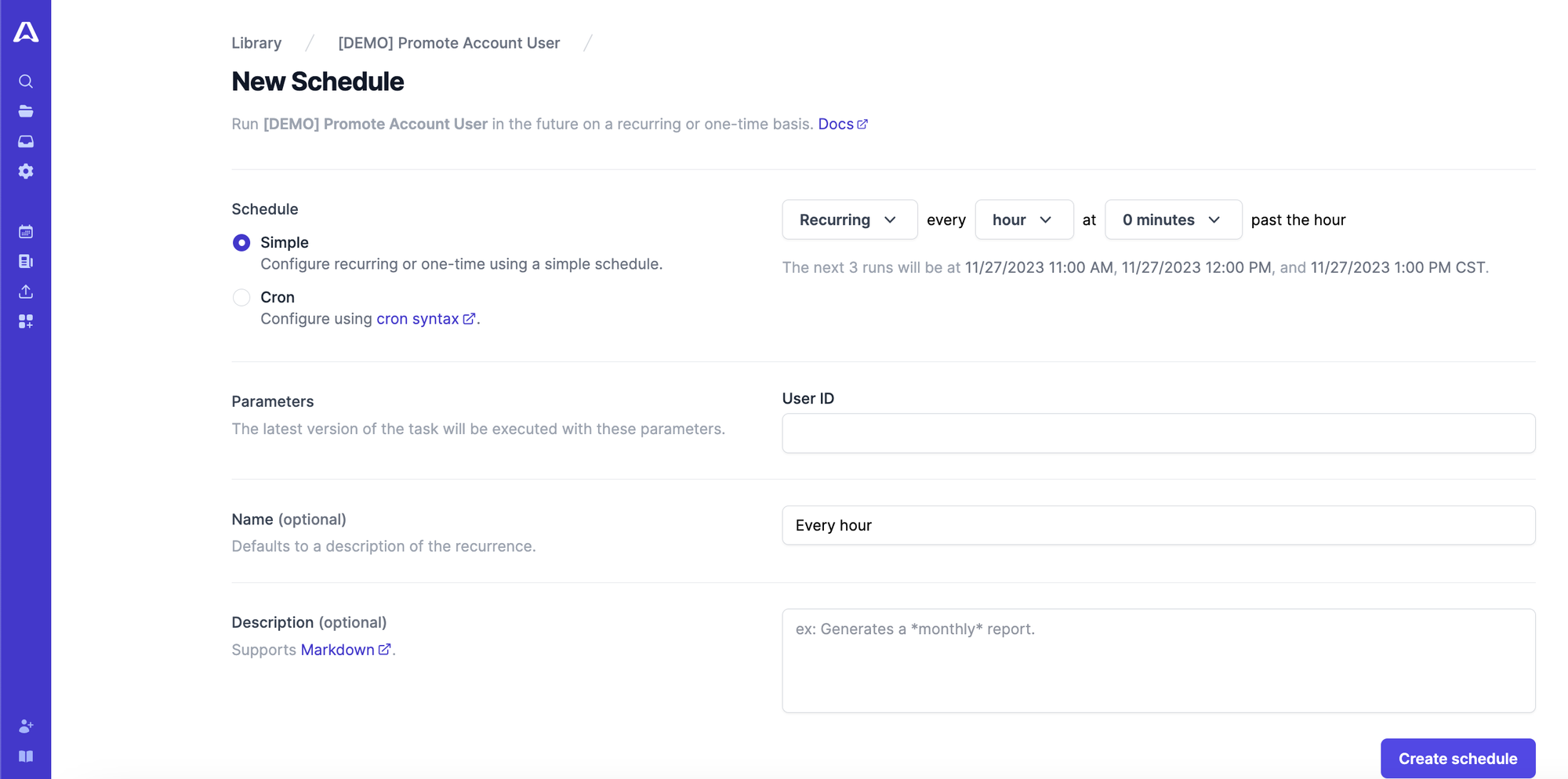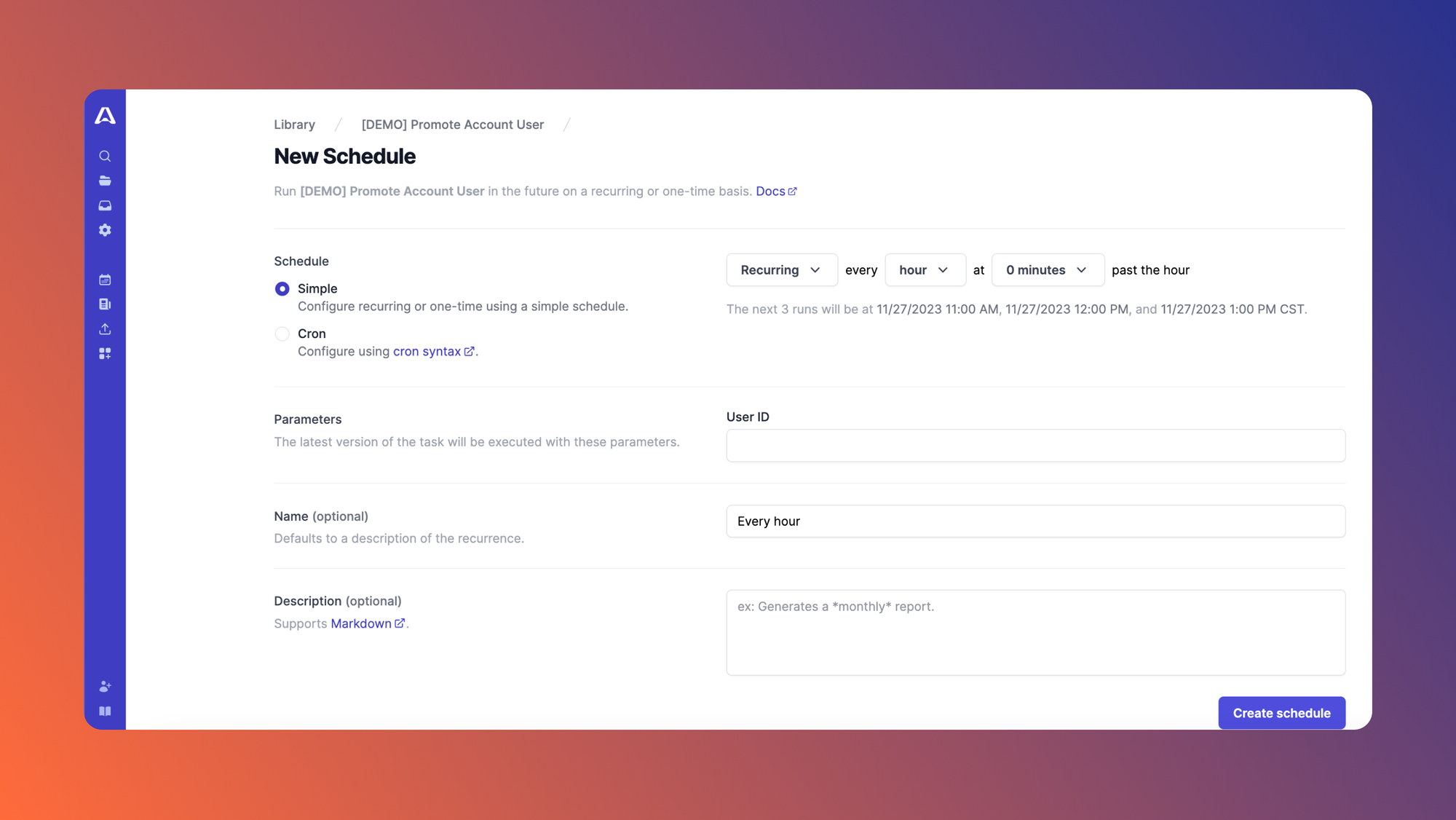Cron jobs are an essential part of server management and automation, allowing you to schedule tasks to run automatically at specified intervals. This guide will delve into how to set up, manage, and troubleshoot Python cron jobs, ensuring your automated tasks run smoothly and efficiently. We’ll also take a look at how these same cron jobs can run in Airplane for even greater control and security.
Introduction to Python cron jobs
Cron jobs, a time-based job scheduler in Unix-like operating systems, are used to automate repetitive tasks. When applied to Python scripts, they can handle a wide range of tasks from data backups to regular data processing. These are normally used to schedule a job that is executed periodically – for example, to send out a report every morning.
Let’s take a look at how to run a python script on a schedule with cron.
Setting up a cron job to run Python
To set up a cron job, you will need access to a Unix-like operating system and will need to have Python installed.
First, if you don’t already have a script you want to run on a schedule, create a Python script that performs your desired task. It’s important to make sure it runs smoothly when you run it manually, otherwise it might silently error when run as a cron job. Here’s an example that prints out a single line of text:
Whether you have a script already or are creating a new one, make sure to take note of the path on your system where that script is located. We’ll need that information later.
Edit the crontab and schedule your job
Once we have a script prepared, we need to access and edit the crontab. The crontab is a list of all the cron jobs your system is configured to run. Access your crontab using the crontab -e command. This is where you will schedule your job. Once we’re editing the crontab, configure the schedule (using cron syntax) for your Python script, tell cron where to find your Python executable and pass it the path to the Python script you want to run:
The above syntax will run your Python script at midnight on every Monday (day 1) of the week. If you need help parsing or writing cron syntax, check out crontab.guru.
Exit the crontab and your script will be all set to run on the schedule you specified!
Managing Your Python cron jobs
Once your cron job is set up, it’s important to manage and monitor it to ensure it's performing as expected. Most anything you need to do related to cron jobs is managed through the crontab:
- Viewing your existing cron jobs: You can list all your currently-scheduled cron jobs by running the
crontab -lcommand. - Editing your existing cron jobs: Edit your cron jobs using the
crontab -ecommand. Make sure to follow the cron format like we did in the example above. - Deleting cron jobs: Remove a cron job by editing the crontab and deleting the specific line, or clear all cron jobs with
crontab -r.
Best Practices for Python cron jobs
To ensure the reliability and efficiency of your Python cron jobs, it's crucial to focus on script simplicity and task specificity. Simple, single-task scripts are easier to debug and less prone to unexpected failures.
It’s also important to include robust error handling in your scripts. Your scripts should be adept at catching and appropriately responding to exceptions, which could include retrying the script, notifying an administrator, or logging any errors for future analysis.
When setting up your cron jobs, always use absolute paths to files and executables to avoid inconsistencies due to varying working directories. Additionally, be mindful of the environment in which the cron job runs, as it often differs from the regular user environment in terms of PATH and other variables, potentially leading to unexpected script behaviors.
Finally, logging and monitoring are also very important when it comes to running cron jobs. By incorporating comprehensive logging within your scripts to track start and end times, errors, and significant status messages you can get a better idea as to how well your cron jobs are working. This, combined with third-party logging solutions like Papertrail, ensures that you always know that your cron jobs are running and can quickly catch any errors that arise.
Running your Python cron jobs in Airplane
If you’d rather not deal with writing cron syntax, figuring out the best way to monitor your cron jobs and especially if you need other people on your team to have visibility into these scheduled scripts, consider Airplane.
With Airplane, you can run your Python scripts on a schedule without having to worry about managing cron syntax. Simply drop your Python script into an Airplane task and then configure a schedule for when you want it to run.

Once you have it set up, there are no monitoring or logging hoops to jump through. Airplane provides a full activity and audit log so you can see when your tasks are running and if something went wrong. You can configure permissions so that the members of your team that need visibility can get access, all while your script runs on Airplane’s serverless infrastructure. Airplane is truly a “set it and forget it” solution to running your Python cron jobs.
Wrapping up
Python cron jobs are a powerful tool for automating repetitive tasks. By understanding how to set up, manage, and troubleshoot these jobs, you can ensure that your automated processes run smoothly and reliably. And if you’re looking for a slightly more robust way to run scheduled tasks, take a look at Airplane schedules. It’s free to get started and you can have your first scheduled task running within minutes.



